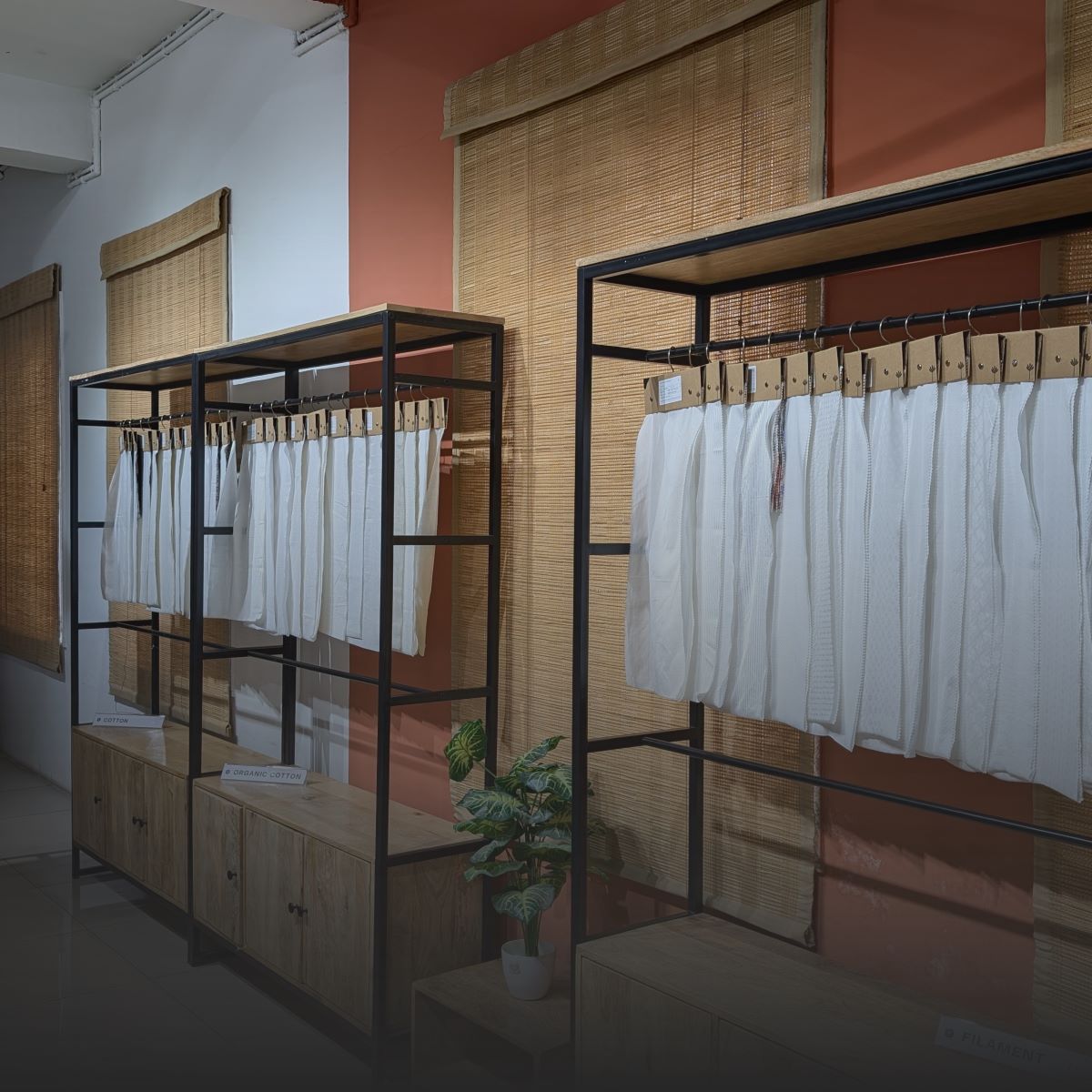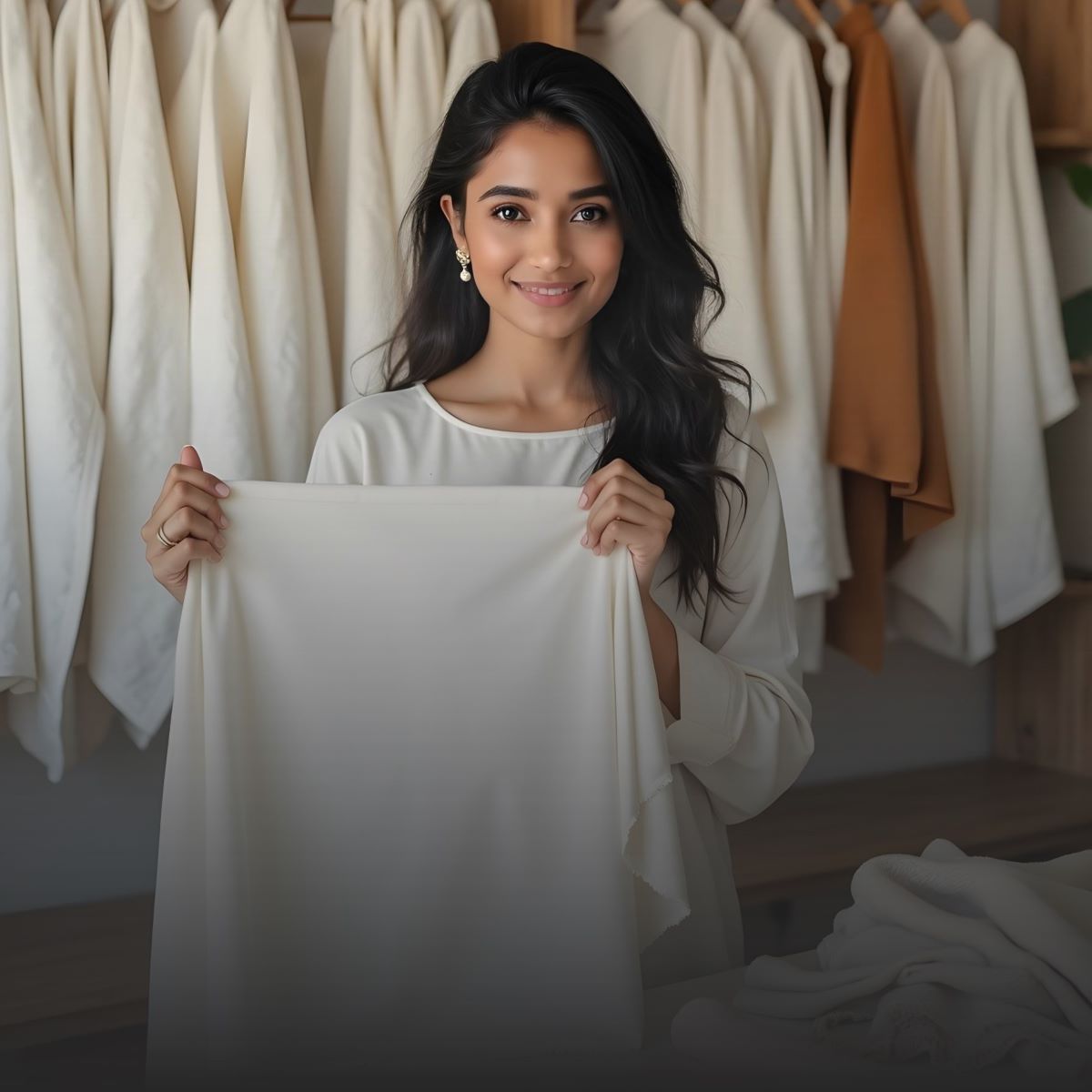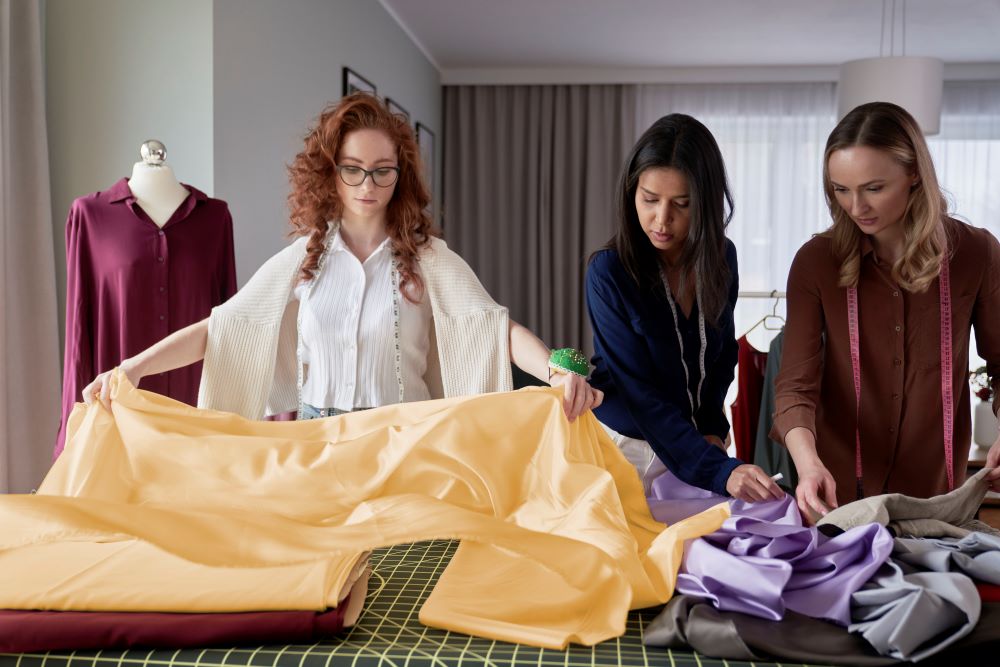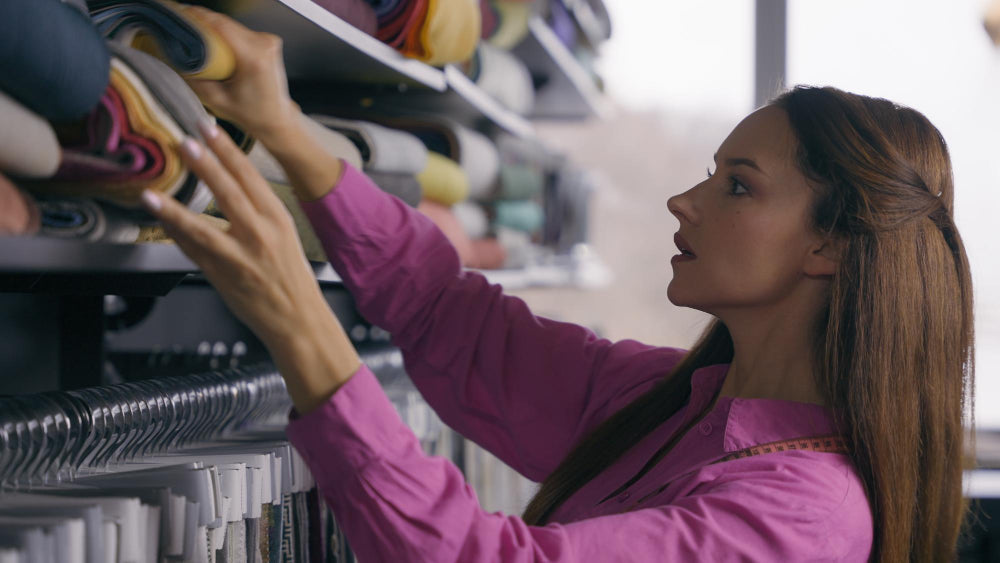Getting the best wholesale fabric prices in Los Angeles can make a big difference for your business. It is not just about finding a low price — it is about knowing how to talk to suppliers and getting terms that actually work for you.
Think about Maria, a local designer in LA who needed a special fabric for her new collection. The first price she got was too high and felt out of reach. Instead of accepting it, she asked questions, shared her order plans and was honest about her budget. Because of that, she secured a better deal and even flexible payment options. That saved her money and helped her launch her collection on time.
Many business owners miss this chance because they do not know how to negotiate or worry about pushing too hard. But negotiation is a skill you can learn — it is about being prepared, clear and fair. When you do it right, you build good relationships and grow your business with confidence.
In this article, you will learn how to approach fabric suppliers in LA, prepare your negotiation and get prices that help your business succeed.
Why Does Negotiation Matter in Wholesale Fabric Buying?

Negotiating wholesale fabric prices in Los Angeles helps you lower costs and improve profit margins, while also building strong relationships with suppliers. This leads to better deals, flexible terms and long-term partnerships that support your business growth.
When you buy fabric wholesale, the price you pay affects your bottom line. Even small savings on large orders add up quickly. But negotiation is more than just getting a lower price — it is about working with suppliers in a way that benefits both sides.
Here is why negotiation matters for your fabric buying success:
- Protect Your Profit Margins
Fabric costs are a major part of your expenses. Getting a better price on bulk orders means you can either keep more profit or offer competitive prices to your customers.
- Gain Flexible Payment and Delivery Terms
Negotiation can help you secure payment plans or delivery schedules that fit your cash flow and production timeline.
- Build Trust with Suppliers
Open, honest negotiation shows you are serious and reliable. Suppliers are more likely to prioritize your orders and offer perks when they trust you.
- Improve Your Buying Power
Negotiation can open doors to better minimum order quantities or bundled discounts that fit your business needs.
In Los Angeles, a competitive fabric market, strong negotiation skills give you an edge. It is about more than just price — it is about building a foundation that supports your brand and keeps your business growing.
How to Find and Evaluate Fabric Suppliers in Los Angeles?

To find reliable wholesale fabric suppliers in Los Angeles, start with the LA Fashion District, search trusted online platforms, attend trade shows and get multiple quotes. Evaluate each supplier by comparing fabric quality, minimum order quantity (MOQ), lead times, pricing and sourcing standards.
Los Angeles is one of the best places in the U.S. to source fabric — but navigating your options takes a bit of strategy. With so many vendors, showrooms and online sources, you need to filter fast and make decisions that support your production timeline and bottom line.
Here is a clear approach that will help you make the right call quickly:
Where to Find Reliable Fabric Suppliers in Los Angeles
-
LA Fashion District: This is ground zero for fabric sourcing in Los Angeles. With hundreds of shops packed into a few blocks, it's the best place to feel, compare and negotiate in person.
-
Online Platforms: Use trusted wholesale directories like Fabriclore.com, Maker’s Row or Alibaba to explore a wider supplier base. Always check reviews, MOQ and shipping timelines.
-
Trade Shows and Industry Events: Attend local fabric and apparel expos to meet manufacturers and mills face-to-face. Events like LA Textile Show give you access to verified, reputable suppliers.
-
Local Fabric Stores with Wholesale Options: Some retail stores in the area also offer bulk deals if you ask directly.
- Industry Forums & Networks: Join online groups, fashion communities or sourcing platforms to learn from other designers and business owners.
What to Compare Before Choosing a Supplier
-
Price per yard or meter for your specific fabric type.
-
Minimum Order Quantity (MOQ) — some suppliers start at 10 yards, others at 500.
-
Lead Time — how quickly can they deliver your order?
-
Customization Options — printing, dyeing or weaving to your spec.
-
Quality Consistency — ask for swatches or samples to verify.
-
Return & Payment Terms — flexibility here matters for growing businesses.
- Sustainability & Certifications if eco-friendly sourcing is your priority.
Why Getting Multiple Quotes Matters
Don't settle after the first conversation. Getting 3–5 quotes helps you:
- Understand the fair market price
- Spot unusually high or low offers
- Gain leverage in negotiations
- Identify suppliers who are open to flexible terms
How Can You Build Strong Relationships with Fabric Suppliers?

In wholesale buying, especially in a fast-moving market like Los Angeles, strong supplier relationships go beyond price tags — they create smoother operations, better fabric access and stronger business stability.
Start by Treating Suppliers Like Business Partners
The best suppliers do not just sell fabric — they help you stay competitive. Show that you value their role in your success. For example, if you're working on a new clothing line, share early sketches or fabric ideas. Some LA suppliers will offer input or even alert you to upcoming inventory that fits your needs.
Reliability matters too. Stick to your payment terms, do not ghost during tough conversations and follow through on what you promise. The more consistent you are, the more willing they will be to support you during crunch times.
Communication Keeps Everything on Track
Many issues in this business come down to poor communication. Whether you're emailing, texting or meeting in person at a showroom downtown, be clear about your needs, deadlines and order expectations.
Let’s say you have a new drop planned for a holiday season — giving your supplier early notice means they can hold inventory, prioritize your dye lot or even waive MOQs. Good communication opens doors.
Trust Brings Long-Term Benefits
Trust builds when you pay on time, give feedback honestly and show up when it counts. Over time, this trust turns into better deals:
- Priority on high-demand fabrics
- Advance notice of discounts or specials
- Flexibility with order sizes or delivery
If you are a growing brand in LA, this kind of loyalty pays off — especially when the market gets competitive.
Collaboration Makes You Both Stronger
Strong supplier relationships also mean working together on more than just transactions. Many LA-based designers co-develop fabrics or explore sustainable options with their vendors. Do not hesitate to ask for advice or offer collaboration when you're testing something new.
If your business is expanding into new markets or platforms, loop your supplier in — sometimes they can support you with faster lead times, better pricing or referrals from their own network.
What Negotiation Strategies Work Best for Wholesale Fabric?

Negotiating wholesale fabric deals is not just about pushing for the lowest price — it is about being smart, prepared and strategic. Whether you're buying for a fashion label or a production house in LA, here is how to lock in the right terms quickly and confidently.
1. Use Data and Competitor Quotes as Leverage
Walk into negotiations with real numbers — not guesses. Before sitting down with a supplier, compare quotes from at least 2–3 others. Use platforms like Maker’s Row or even Alibaba to benchmark pricing, quality standards and MOQs (Minimum Order Quantities).
-
Have cost-per-yard comparisons ready
-
Know standard MOQs in your category
- Bring up competitor terms without playing hardball
A well-informed buyer is taken more seriously — and often gets better rates or terms on the spot.
2. Define Your Walk-Away Point Before You Sit Down
Know exactly what is non-negotiable — and be ready to step away if a deal does not align. This does not make you difficult; it makes you decisive.
For example:
- If your max cost is $4.50/yard for organic cotton, do not entertain $5.75 without significant added value.
- If lead time or delivery is not workable, politely decline and revisit later.
Being clear on your limits shows professionalism and keeps you from overcommitting just to close a deal.
3. Offer Something Valuable: Bulk, Repeat Orders or Deposits
Suppliers reward stability. If you can commit to a larger volume — even over multiple shipments — you're more likely to get better rates, priority service or flexibility with payment terms.
Some strategic ways to offer value:
-
"We can commit to 1,000 yards per quarter — what can you offer us for that volume?"
-
"We are launching six collections this year — can we lock in pricing for consistent reorders?"
- "Would a 30% deposit secure a better MOQ or faster production slot?"
In busy sourcing hubs like Los Angeles, these approaches signal that you're a serious buyer — not just browsing.
4. Negotiate Beyond Price: Think Total Value
Do not focus only on cost per yard. Real value includes:
- Delivery lead times (faster means you sell sooner)
- Quality consistency (fewer returns, less waste)
- Payment flexibility (net 30 or staggered deposits)
Use a “total value” mindset to get more favorable terms without demanding unrealistic discounts.
Why Fabriclore Is the Ideal Partner for Fabric Sourcing & Price Negotiation in Los Angeles

When negotiating fabric prices in Los Angeles, having a reliable, transparent and global supplier gives you an edge. That’s where Fabriclore steps in.
As one of India’s leading wholesale fabric suppliers, Fabriclore collaborates with fashion businesses in Los Angeles and across the globe, offering fully customized fabrics, low MOQs and unmatched wholesale pricing. Whether you're sourcing RFD, mill-dyed or sustainable fabrics like cotton, silk or modal, you can streamline your buying process with Fabriclore’s all-in-one textile solutions.
Here’s how Fabriclore empowers buyers in Los Angeles:
-
Low MOQ with Competitive Wholesale Pricing – Ideal for local designers and small brands who want to negotiate without high volume pressure.
-
Full Customization – Choose from over 300 fabric varieties and thousands of print options or get your own designs printed.
-
Expert Consultation – Work with fabric experts who guide you from concept to delivery, helping you negotiate smarter.
-
Quality & Transparency – Every fabric comes with detailed specs, defect checks and lab-tested assurance.
- Tech-Enabled Global Delivery – With real-time tracking and responsive support, your fabrics arrive at your Los Angeles studio on time—no guesswork.
If you're looking to negotiate better fabric prices in the Los Angeles market without sacrificing quality or customization, Fabriclore gives you a trusted platform to make it happen.
Schedule a free consultation with our fabric experts and elevate your sourcing strategy.
What Terms Should You Discuss Beyond Just Price?

When negotiating wholesale fabric deals, it's essential to go beyond just price. Key terms like minimum order quantities (MOQs), payment schedules, shipping costs, lead times and return policies directly impact your cash flow, delivery timelines and overall business efficiency—making them critical for a profitable and reliable partnership.
Here is what to lock in before signing on the dotted line:
1. Payment Terms That Support Cash Flow
Price means little if the payment structure squeezes your cash flow. Instead of full upfront payment, negotiate:
-
Net 30 or Net 45 terms to give your business breathing room.
-
Split payments — e.g., 30% advance and 70% on delivery.
- Installment plans for large orders or repeat purchases.
Flexible payment terms help you fund operations, launch collections faster and reinvest sooner — all without draining your budget.
2. Shipping Costs and Responsibilities
Always ask: Is shipping included? Who is paying for freight or customs if sourcing overseas?
Negotiate:
-
FOB vs. CIF (Who pays for what in freight?)
-
Domestic vs. international carrier options
- Estimated delivery timeframes with written commitments
Surprise shipping charges can kill your profit margin, so locking this upfront protects your bottom line.
3. Returns, Defects and What Happens When Things Go Wrong
Defective fabric or wrong dye lots? Do not be caught without a clear agreement.
Ask about:
-
Return or replacement policies
-
Defect claim timelines
- Refund vs. credit options
Get these policies in writing. It builds accountability and gives you recourse if the shipment does not meet standards.
4. Minimum Order Quantities (MOQs) That Fit Your Scale
MOQs vary wildly — from 50 yards to 1,000+. Do not assume yours will match your needs.
Negotiate:
-
Lower MOQs for sampling or seasonal collections
-
MOQ flexibility for first-time orders
- Incentives for meeting higher MOQs (like better rates or faster turnaround)
This helps you stay lean without overstocking.
5. Lead Times and Customization Options
If your launch or client deadline depends on timely delivery, lead times matter just as much as cost. Discuss:
-
Production lead time (and whether it changes during peak seasons)
-
Customization availability — custom colors, textures or weaves
- Rush order terms and related fees
Faster or more reliable turnaround gives your brand a competitive edge — especially in fashion-forward markets like Los Angeles.
6. Aligning Quality and Sustainability Standards
Fabric that does not meet your brand’s quality or sustainability goals can lead to product returns, brand damage and waste.
Ask about:
-
Quality control process (Are checks done before shipment?)
-
Certifications (GOTS, OEKO-TEX, etc.) if you are sourcing organic or sustainable fabrics
- Consistency across dye lots and orders
Getting clarity here protects your brand reputation and long-term trust with customers.
How to Finalize and Document Your Wholesale Fabric Deal
Finalizing a wholesale fabric deal is not just about agreeing on a price — it is about securing a clear, reliable partnership. To avoid confusion, delays or unexpected costs, you need to be prepared, negotiate smartly and document everything professionally. Here is how to wrap up your fabric sourcing process the right way:
-
Know Exactly What You Need
Define your fabric requirements in advance — type, quality, quantity, delivery timeline and budget. This keeps negotiations focused and prevents miscommunication. -
Reach Out to Multiple Suppliers
Compare offers from different vendors. This gives you negotiation leverage and ensures you are getting the best price and service. -
Negotiate the Key Terms
Discuss pricing, payment schedules, minimum order quantities (MOQs), shipping fees, estimated delivery times and return or damage policies. Be transparent and use market data or competitor quotes to support your position. -
Get Everything in Writing
Once you agree on the deal, document every detail in a formal contract. Include all negotiated terms, technical specifications, timelines and payment conditions. -
Use Digital Signatures & Save Communication
Digital contracts save time — make sure both parties sign. Store all related emails, messages and receipts for future reference and accountability. -
Be Professional & Willing to Walk Away
If the terms do not meet your needs, do not hesitate to walk away. Long-term supplier relationships are built on mutual respect and transparency.
What Mistakes to Avoid While Negotiating Fabric Prices

Avoid rushing into negotiations without thorough research and preparation. Do not focus only on price—consider all costs and terms to make the best decision. Build strong relationships and understand both your needs and the suppliers to negotiate effectively. Stay patient, flexible and be ready to walk away if the deal is not right.
-
Rushing without research: Failing to analyze market prices, competitor quotes and your own fabric needs leads to poor decisions.
-
Ignoring hidden costs: Overlooked shipping fees, taxes, return policies and minimum order quantities can increase expenses unexpectedly.
-
Focusing only on price: Prioritize overall value, including quality, delivery times and supplier reliability, not just the lowest cost.
-
Neglecting relationship-building: A good rapport with suppliers often results in better terms and smoother collaboration.
-
Being overly aggressive: Demanding too much too soon can harm negotiations and damage trust.
-
Skipping strategy planning: Enter negotiations with clear objectives, priorities and fallback options.
-
Not understanding supplier perspective: Knowing supplier challenges helps create win-win agreements.
-
Ignoring your alternatives: Always identify your Best Alternative to a Negotiated Agreement (BATNA) and be willing to walk away if needed.
- Overlooking emotional control: Stay calm and professional to keep discussions productive.
Conclusion
Negotiating fabric prices in Los Angeles does not have to be overwhelming—especially when you are informed, prepared and strategic. From understanding market rates to building lasting supplier relationships, each step plays a vital role in getting the best deal for your business. Whether you are sourcing in the bustling LA Fashion District or dealing with suppliers online, remember: clarity, confidence and communication are your strongest assets.
Approach every negotiation with a win-win mindset and you will not only secure better pricing but also lay the foundation for long-term success in the fashion and textile industry.
FAQs
How to negotiate wholesale pricing?
Be direct but professional—request bulk discounts, share your target price and highlight your long-term buying potential. Being specific about fabric type, quantity and delivery timelines helps secure better terms.
Where do top designers get their fabrics from?
Top designers source fabrics from hubs like the Los Angeles Fashion District and trusted online platforms such as Fabriclore, which offers premium, customizable fabrics with global shipping and low MOQs.
When is the best time to negotiate prices?
The best time to negotiate is during off-peak seasons or end-of-season clearance when suppliers are more flexible and open to offering deals on inventory.
Do Los Angeles suppliers accept small MOQ negotiations?
Many suppliers in LA are open to negotiating lower MOQs, especially if you are working with specialty fabrics or show potential for repeat business.
Can local buyers get better terms than online bulk orders?
Yes, in-person buyers often gain better terms through relationship-building, real-time negotiation and access to exclusive or limited stock not listed online.
We also happen to be a magnet for suggestions, and would love to catch yours….throw us yours on hello@fabriclore.com




